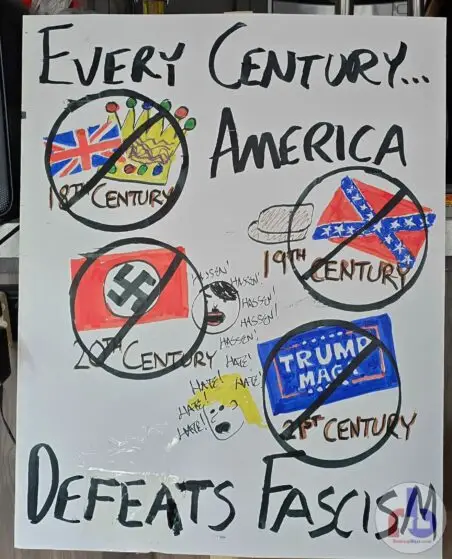West Virginia Becomes The 5th Pharmaceuticalized Cannabinoids State
This week, many media outlets, both cannabis and mainstream, are reporting that West Virginia has become the 29th medical marijuana state.
They are wrong. West Virginia has become the 5th pharmaceuticalized cannabinoid state.
Sorry, if a patient can’t grow cannabis and smoke actual marijuana, it’s not a “medical marijuana state.” West Virginia’s law allows no smoking and no edibles, just non-smokable oils and tinctures.
I understand the allure of calling West Virginia the 29th medical marijuana state. It makes it seem like our movement is overwhelming the entire country. That helps to frame marijuana reform as inevitable and support for it as ubiquitous.
But come on now. Calling Oregon and West Virginia both “medical marijuana states” is like including Picasso and George W. Bush in a list of “World’s Greatest Painters.” Patients in Oregon can grow 6 cannabis plants and possess a pound and a half of marijuana. That will still get you prison time in West Virginia, patient or not.
Putting all 29 of these states into the same category is also obscuring the trajectory of medical marijuana away from whole plant healing and into the ledger of GW Pharmaceuticals.
It also gives a false sense of popularity when we see polls saying 93 percent of the country supports medical marijuana. Ask if they support their neighbor growing a half-dozen cannabis plants and smoking marijuana next door because a doctor said it’s good for his anxiety and I doubt you get 93 percent support.
The reality is that West Virginia is just the latest state to prove the Box Canyon Theory I first presented at a HIGH TIMES Medical Cannabis Cup in 2010.
The theory, which I first articulated based on comments made by former NORML Executive Director Allen St. Pierre, states that so long as the fight for marijuana reform concentrates solely on medical use, the need to identify whose marijuana use is medical and whose use is still worthy of punishment will result in marijuana becoming no different than a pharmaceutical.
It’s a political box canyon where medical marijuana becomes stripped of everything that associates it with non-medical use. In the end, it means laws where growing cannabis and smoking marijuana are more strongly separated from medicine and reviled as something only potheads do to get high.
The proof? Start with California in 1996, which passed medical marijuana where only a doctor determines who qualifies and patients can grow as much of their own cannabis as they need and they can smoke marijuana.
Next you get Oregon, Washington, and Alaska in 1998, which decide that doctors in California are letting too many potheads use medical marijuana to get high. They pass medical checklist marijuana that establishes that doctors can only certify that a patient meets acceptable criteria on a pre-determined list of conditions. They decide Californians are growing too much cannabis, because it’s getting to potheads who are smoking it to get high, so they set specific plant count limits. But patients can still grow their own and smoke marijuana.
Medical checklist marijuana continues through the 2000s, but the laws begin whittling down the number of plants patients could grow, from 6 or 7 to just 2 or 3, because still, too much of that medicine is getting to potheads who use it to get high. But patients can still grow their own and smoke marijuana.
Then comes Arizona in 2010, the first to become a pharmaceuticalized marijuana state. They decided that only patients living in the far-flung desert need to grow their own cannabis plants, because patients in the city can just shop for marijuana at the pharmacy… I mean, dispensary. Potheads in the city would just use medical marijuana laws to grow cannabis to smoke marijuana and get high. Arizona established 25-mile radius halos around dispensaries, and if you live within them (as 97 percent of Arizona’s population does), you cannot grow cannabis. But patients can still smoke marijuana.
Then in 2014, Minnesota becomes the first pharmaceuticalized cannabinoid state. No patients can grow cannabis plants or possess marijuana, because that’s something only potheads do to get high. They can go to a dispensary and buy a cannabinoid oil, pill, or vape cartridge, like any other real (non-smoked) medicine.
Also in 2014, Utah began the wave of CBD oil states, pharmaceuticalizing cannabis with scant to near non-existent levels of THC. After all, THC is the chemical in marijuana that’s psychoactive; only potheads who want to get high need that.
Since 2014, culminating with West Virginia this week, all five medical marijuana laws passed legislatively do not allow growing cannabis and smoking marijuana. Since 2010, all twelve medical marijuana laws that have passed legislatively forbid home cannabis cultivation and none of the four that passed as initiatives explicitly allow all patients to grow. There hasn’t been a medical marijuana law since Michigan in 2008.
Still, congratulations to West Virginia. Their law is better than nothing and thousands of serious sick and disabled people will find great relief in their pharmaceuticalized cannabinoid preparations. Just don’t tell me it’s a medical marijuana state. From now on, patients that want to grow cannabis and smoke marijuana for medicinal benefits are going to have to ally with us potheads who smoke marijuana to get high and help pass legalization.






